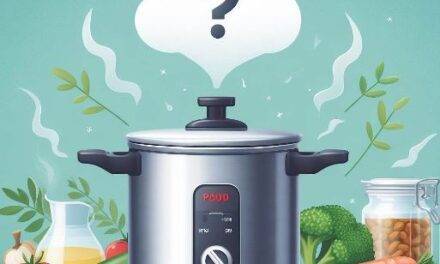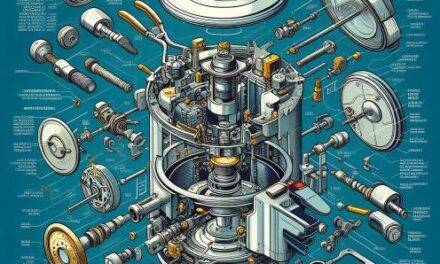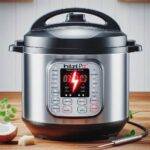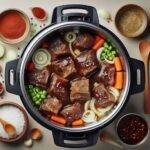Introduction:
Pressure cooker safety, Pressure cookers have been a staple in kitchens for centuries, and their resurgence in recent years is no surprise. These versatile appliances can whip up mouthwatering meals in a fraction of the time it takes using traditional cooking methods. From savory stews to delectable desserts, pressure cookers offer convenience and flavor preservation that’s hard to beat. They’re also eco-friendly, saving energy and water, and turning budget-friendly cuts of meat into tender delicacies. and if you want pressure cooker or instant pots safety information click here
However, it’s crucial to remember that pressure cookers are not your run-of-the-mill kitchen gadgets. They harness high pressure and temperature to work their magic, making them potentially hazardous if not handled with care. Some of the most common accidents involving pressure cookers include steam burns, explosions due to overfilling or excessive heat, cuts from sharp edges, and even electric shocks from faulty wiring or plugs.
In this blog post, we’ll share essential tips on using your pressure cooker safely to avoid these accidents and enjoy delicious meals without worry.
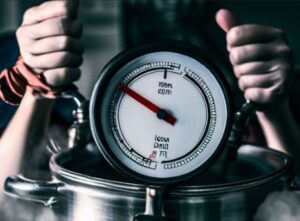
Safety Tips for Pressure Cooker Enthusiasts
1. Read the Manual
Your pressure cooker likely came with an instruction manual – make it your kitchen companion. Familiarize yourself with its features, functions, and safety guidelines. Understanding how your specific pressure cooker works is the first step to safe usage.
2. Check the Parts
Before each use, inspect your pressure cooker for any signs of wear, tear, or damage. Ensure that safety valves, seals, and pressure release mechanisms are in good condition. A well-maintained pressure cooker is a safer one.
3. Use Enough Liquid
Adequate liquid is crucial for proper pressure cooker operation. It creates the steam necessary to build pressure and cook your food. Always consult your recipe for liquid requirements and follow them closely. Insufficient liquid can lead to scorching and increased pressure inside the pot.
4. Avoid Overfilling
Resist the urge to fill your pressure cooker to the brim. Overfilling can cause food particles to block the steam release valve or safety mechanisms, increasing the risk of accidents. Leave some room for expansion, especially when cooking ingredients that swell.
5. Release Pressure Properly
After cooking, it’s vital to release pressure correctly. Allow the pressure to drop naturally for some recipes, while others may require a quick release. Refer to your manual or recipe instructions for the appropriate method. Sudden pressure release can result in steam burns or spattering food.
6. Clean and Store Thoughtfully
Proper cleaning and storage prolong the life of your pressure cooker and keep it safe to use. Follow the manufacturer’s recommendations for cleaning, and store your cooker in a cool, dry place with the lid off to prevent odors and moisture buildup.
Pressure Cooker Safety Table
| Safety Feature | Purpose | Notes |
|---|---|---|
| Pressure relief valve | Releases excess pressure from the cooker to prevent it from exploding. | There are two types of pressure relief valves: weight-based and spring-loaded. Weight-based valves are more common on stovetop pressure cookers, while spring-loaded valves are more common on electric pressure cookers. |
| Safety lock | Prevents the lid from being opened while the cooker is pressurized. | Most pressure cookers have a safety lock that is activated when the cooker reaches pressure. The safety lock cannot be released until the pressure has been reduced to a safe level. |
| Gasket | Creates a tight seal between the lid and the pot, preventing steam from escaping. | The gasket should be inspected regularly for cracks or tears. If the gasket is damaged, it should be replaced immediately. |
| Anti-block shield | Prevents food from clogging the pressure relief valve. | The anti-block shield should be cleaned regularly to remove any food debris. |
| Max fill line | Indicates the maximum amount of food and liquid that can be safely cooked in the pressure cooker. | Exceeding the max fill line can block the pressure relief valve and create a dangerous situation. |
Conclusion
While pressure cookers are invaluable in the kitchen, they demand caution and respect. By following these safety tips, you can harness the potential of your pressure cooker while minimizing the risk of accidents or injuries. Remember, read the manual, inspect your cooker, use sufficient liquid, avoid overfilling, release pressure as directed, and maintain proper cleaning and storage practices. With these simple steps, you’ll master the art of pressure cooking and enjoy culinary adventures in safety and style.




